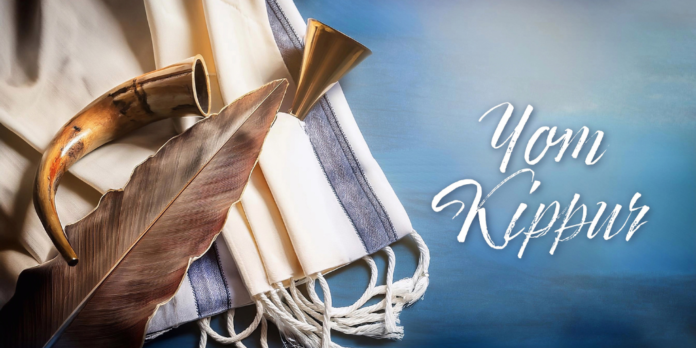Yom Kippur, known as the Day of Atonement, is one of the most sacred and solemn days in the Jewish calendar. Falling on the 10th day of the Hebrew month of Tishrei, it marks the culmination of the Ten Days of Repentance that begin with Rosh Hashanah, the Jewish New Year. In 2024, Yom Kippur begins at sunset on Sunday, October 6, and concludes at nightfall on Monday, October 7.
The day is dedicated to self-reflection, repentance, and seeking forgiveness from God and others. It is observed through fasting, prayer, and abstaining from physical pleasures, providing a time for individuals to purify their souls and renew their commitment to leading righteous lives.
Historical and Religious Significance
The origins of Yom Kippur are rooted in the Torah, where it is described as a day for atonement and reconciliation. The Book of Leviticus (16:29-34) outlines the rituals that were conducted in the ancient Temple in Jerusalem, including the High Priest’s entry into the Holy of Holies to seek forgiveness for the sins of the Israelites.
Yom Kippur holds deep theological significance as it symbolizes the opportunity for individuals to atone for their transgressions and begin anew. The day emphasizes the themes of repentance (“teshuva”), prayer (“tefillah”), and charity (“tzedakah”), which are seen as pathways to forgiveness.
Preparations for Yom Kippur
Preparation for Yom Kippur begins several days in advance. Observant Jews often engage in self-reflection and reconciliation, seeking forgiveness from friends, family, and colleagues for any harm caused during the year. This practice aligns with the belief that forgiveness from God is contingent upon making amends with others.
On the eve of Yom Kippur, a festive meal known as “Seudah Mafseket” is shared with loved ones. This pre-fast meal is carefully planned to include nourishing and easily digestible foods, helping participants sustain themselves during the 25-hour fast.
The Day of Yom Kippur: Rituals and Practices
- Fasting and Abstinence
- The central observance of Yom Kippur is a complete fast from food and drink, beginning at sunset and ending the following nightfall. This fast also includes abstaining from bathing, wearing leather shoes, and engaging in marital relations, emphasizing the day’s spiritual focus.
- Prayer and Worship
- Yom Kippur is marked by extended synagogue services featuring specific prayers and liturgical texts. The most notable prayers include:
- Kol Nidrei: Recited at the start of Yom Kippur, this prayer annuls personal vows made during the year, highlighting the themes of forgiveness and renewal.
- Vidui (Confession): A repeated confessional prayer in which worshippers collectively acknowledge their sins and seek God’s forgiveness.
- Neilah: The closing prayer service, symbolizing the final moments to appeal for mercy before the gates of heaven are sealed.
- Yom Kippur is marked by extended synagogue services featuring specific prayers and liturgical texts. The most notable prayers include:
- Wearing White
- Many worshippers wear white garments, such as a kittel (a simple white robe), symbolizing purity and the aspiration for spiritual renewal.
Reflections on Themes of Yom Kippur
Yom Kippur serves as a profound reminder of the fragility of human existence and the importance of ethical living. It encourages introspection and accountability, offering individuals a chance to:
- Seek Forgiveness: The day underscores the necessity of asking for and granting forgiveness, fostering stronger personal relationships and community bonds.
- Pursue Spiritual Growth: The fasting and prayers provide an opportunity to transcend physical needs and focus on the soul’s connection with the divine.
- Reaffirm Commitments: By reflecting on past actions and setting intentions for the future, participants renew their dedication to living a life aligned with their values.
Yom Kippur 2024: Practical Observations
In 2024, Yom Kippur falls on a Sunday evening, making it more accessible for those who might otherwise face work or school obligations. Synagogues worldwide are expected to see increased attendance as families and communities gather to observe the holy day.
For those unable to attend services in person, many congregations now offer virtual prayer options, ensuring inclusivity and participation for individuals who are homebound or live far from a synagogue.
Break-Fast Traditions
The conclusion of Yom Kippur is marked by the blowing of the shofar, a ritual that signifies the end of the fast and the start of a new spiritual chapter. After this, families and friends gather to share a “break-fast” meal, often consisting of dairy dishes, bagels, smoked fish, and light desserts. This meal is a joyful occasion, celebrating spiritual renewal and communal togetherness.
The Broader Message of Yom Kippur
Yom Kippur’s lessons extend beyond the Jewish community, offering universal values of self-improvement, reconciliation, and compassion. In a world often divided by differences, the themes of Yom Kippur encourage people of all backgrounds to reflect on their actions, mend broken relationships, and strive for a more harmonious and ethical society.
Conclusion
Yom Kippur 2024 is a time for deep reflection, spiritual renewal, and communal unity. Whether through fasting, prayer, or seeking forgiveness, this sacred day offers a profound opportunity to reset and recommit to living with intention and integrity. As the sun sets on October 7, may all who observe Yom Kippur find peace, forgiveness, and a renewed sense of purpose.
